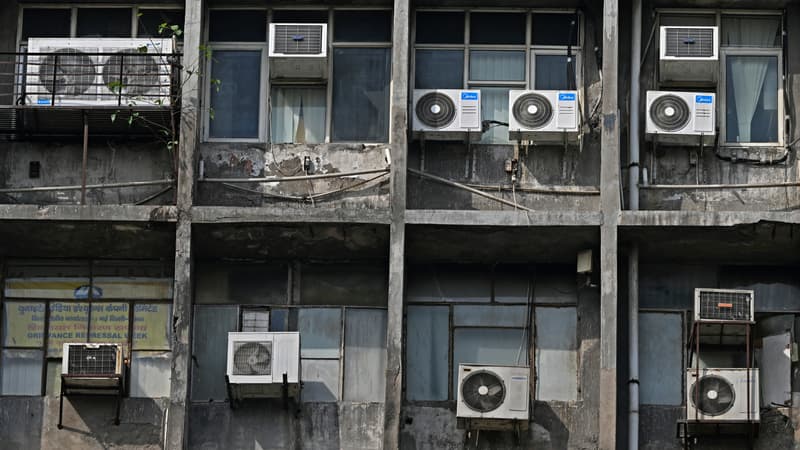“An air conditioning had become essential.” As millions of Indians who suffocate each year in the hot season, Aarti Verma has bought this team for their priority, even if it contributes to the weather warming. With the increase in living standards and temperatures, the number of air conditioners sold in the most populous country on the planet (1.4 billion inhabitants) are expected to pass 14 million units in 2024 to 30 million by 2030.
Figures that dizzy. By way of comparison, the Americans, very large air conditioners, bought just over five million in 2024 with record years to more than 6 million units. By 2030, therefore, the Indians will buy five to six times from devices than the richest country in the world.
But to feed these devices particularly energy, India will have to triple your electricity production. The third largest greenhouse gase transmitter in the world still depends on very polluting coal for its electricity. Consumed one billion tons in 2024-2025. In addition, the refrigerant gases of air conditioners, leaks, contribute to heating, as well as the hot air they reject.
Sales growth due to several factors
But for the commercial Aarti Verma, 25, who walks through the streets of New Delhi all day to see its clients, the priority is elsewhere. “When I’m going home after a long day of work, I want a minimum of comfort,” explains the young woman, who earns 30,000 rupees (310 euros) per month. “Before, he slept on the terrace. But now it is so hot at night that the air conditioning has become essential,” he adds in his modest two -room apartment in a disadvantaged district of the Indian capital.
India is the fastest growth conditioners in the world, although only 7% of households are equipped. “The progression of its sales is mainly due to climate, the growth of the middle class, good financing offers and high seas access to electricity,” according to KJ Jawa, director of the Indian of the Japanese manufacturer Daikin.
Heat records
More and more hot and long, Indian summers have pushed consumers to equip themselves. The inhabitants are traditionally broken in these heat, from April to June, but climate change has extended, multiplied and intensified their episodes worldwide, have shown the work of scientists.
Babies, elders or sick and all who work outdoors are particularly vulnerable. Abrasing temperatures are the source of almost 11,000 deaths between 2012 and 2021, according to data from the Indian government. Last year he was the most popular in the country since 1901, with the longest heat wave ever registered and the temperatures that frequently exceeded 45 ° C. In May 2024, the New Delhi capital matched its record two years before: 49.2 ° C.
According to the studies of the World Health Organization (WHO) and UN-Habitat, air conditioners help increase temperatures in urban areas, at least one degree on average, due to the hot air they reject. To cool off, Aarti Verma has been contained for a long time with an air soda, a huge, but rustic and noisy turbine, placed in front of a tray of water to blow fresh air. But the restriction of its permanent fuel refueling and the possibility of seeing the mosquitoes established there have convinced him to buy an air conditioning for the equivalent of 515 euros, a small fortune for her.
She paid a deposit of 130 euros for the purchase and will pay the rest in monthly payments.
Pollutant and energy consumption devices
On this very hot afternoon in April, the imperial cooling store, located in an old Delhi district, does not begin. Japsapon Singh Ahuja, 22, whose family has been celebrating this business for 50 years, rubs his hands. Its air conditioners have tripled for five years, driven by new customers and those who replace their old devices.
Delhi’s megapolo, which has more than 30 million inhabitants, is one of the most contaminated on the planet. According to the UN environment, the air conditioners will be responsible for a quarter of the CO2 emissions of India and will absorb almost half of their electricity application by 2050. But to date, the country has not joined its global cooling commitment, aimed at reducing the climate impact of air conditioning.
Japsapon Singh Ahuja does not care about that, the one who finds the appetite of his clients every day for less greedy devices in electricity. Reversible models (Hot/Cold), in which manufacturers regulate temperature at 24 ° C by default, are now at the top of sales, the seller points out. “The energy consumption classifications are now mandatory,” he adds, “we will all take advantage of it.”
Source: BFM TV


